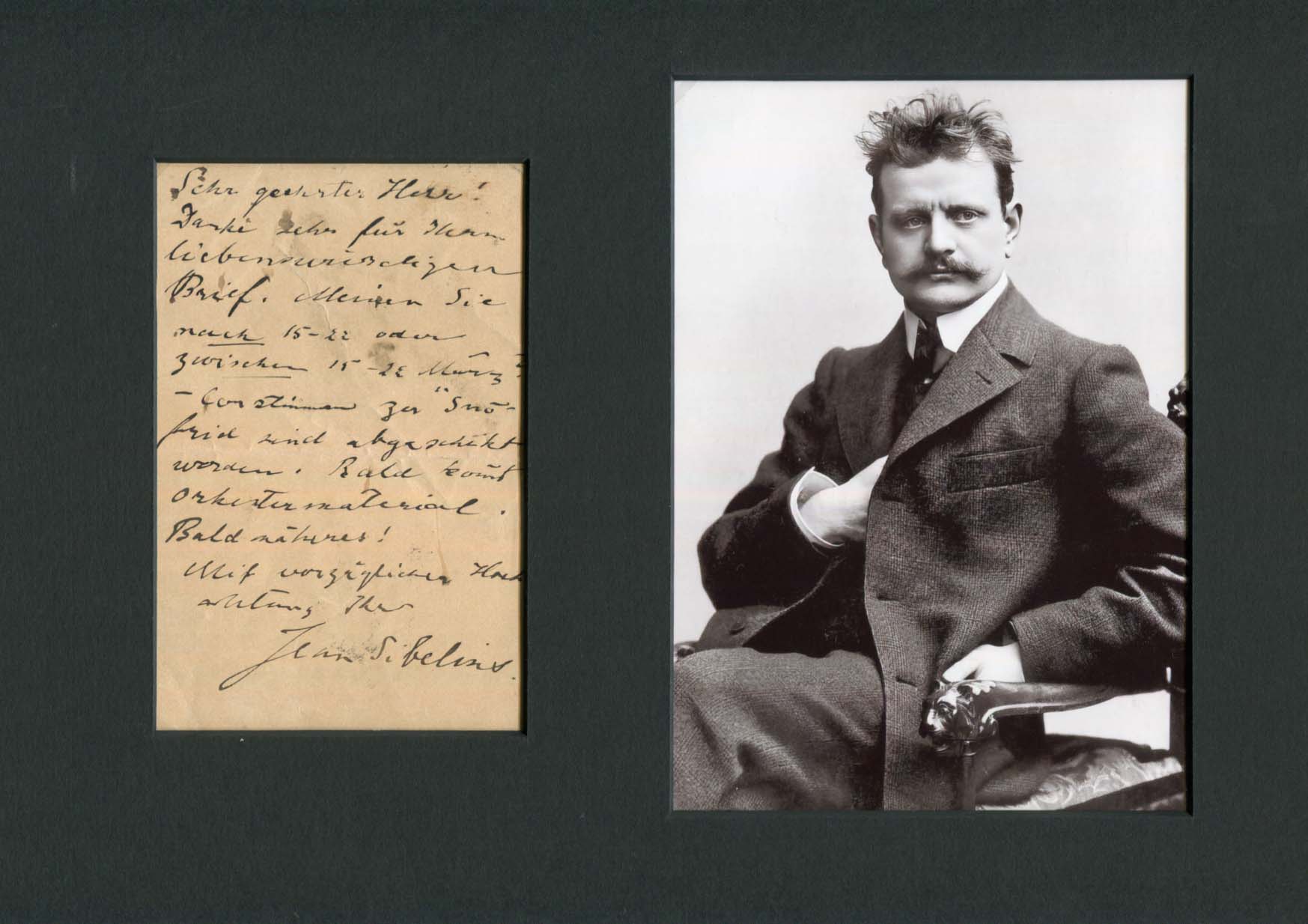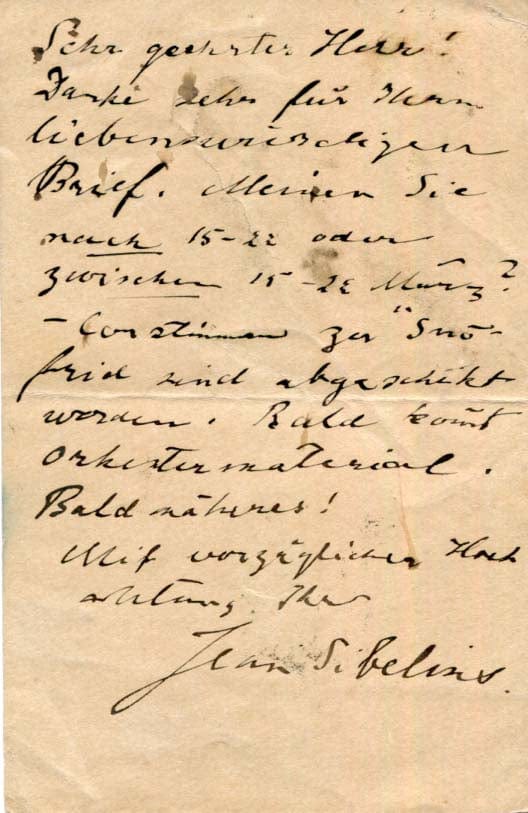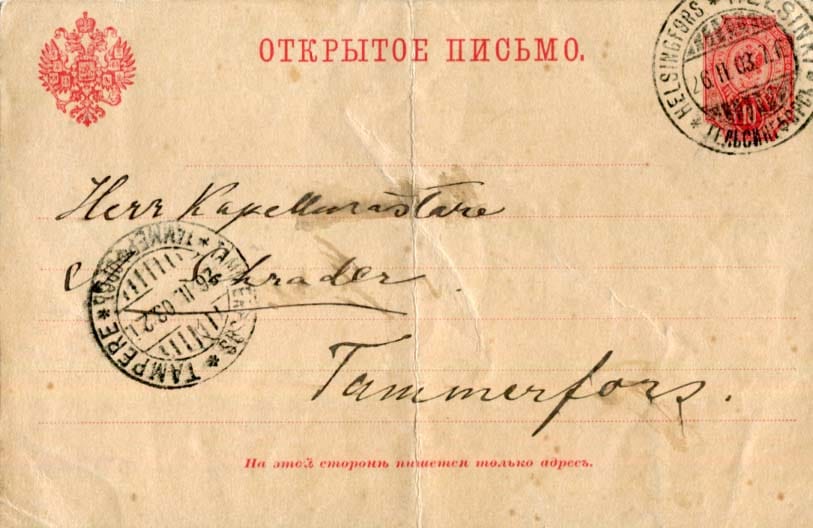Beschreibung
Eigenhändiger Brief mit Unterschrift, eine Seite - Postkarte, 3,5 x 5,5 inch, (Helsinki), (26.11.1903), an den Kappelmeister von Tammerfors (Tampere) - u.a. Chorstimmen für `Snöfrid`* und Orchestermaterial betreffend, in dunkler Tinte geschrieben und signiert "Jean Sibelius", zur Ausstellung attraktiv montiert (herausnehmbar) mit einer Photographie von Jean Sibelius (insgesamt 11,75 x 8,25 inch), mit einer horizontalen Faltenspur und leicht fleckig - in gutem Zustand.
"Sehr geehrter Herr!
Danke sehr für Ihren liebenswürdigen Brief. Meinen Sie nach 15-22 oder zwischen 15-22 März?
Chorstimmen zu `Snöfrid` sind abgeschickt worden. Bald kommt Orchestermaterial. Bald näheres!
Mit vorzüglicher Hochachtung - Ihr Jean Sibelius"
* `Snöfrid`, Op. 29, ist ein Melodram oder eine „Improvisation für Erzähler, gemischten Chor und Orchester“ von Jean Sibelius. Er vollendete es 1900 nach einem Text von Viktor Rydberg.
Weitere Infos zur Person
Profession:
(1865-1957) Finnish composer of the later Romantic period
Year of Birth: 1865
Echtheitszertifikat
Zahlung & Sicherheit
Deine Zahlungsinformationen werden sicher verarbeitet. Wir speichern keine Kreditkartendaten und haben auch keinen Zugang zu deinen Kreditkartendaten.



